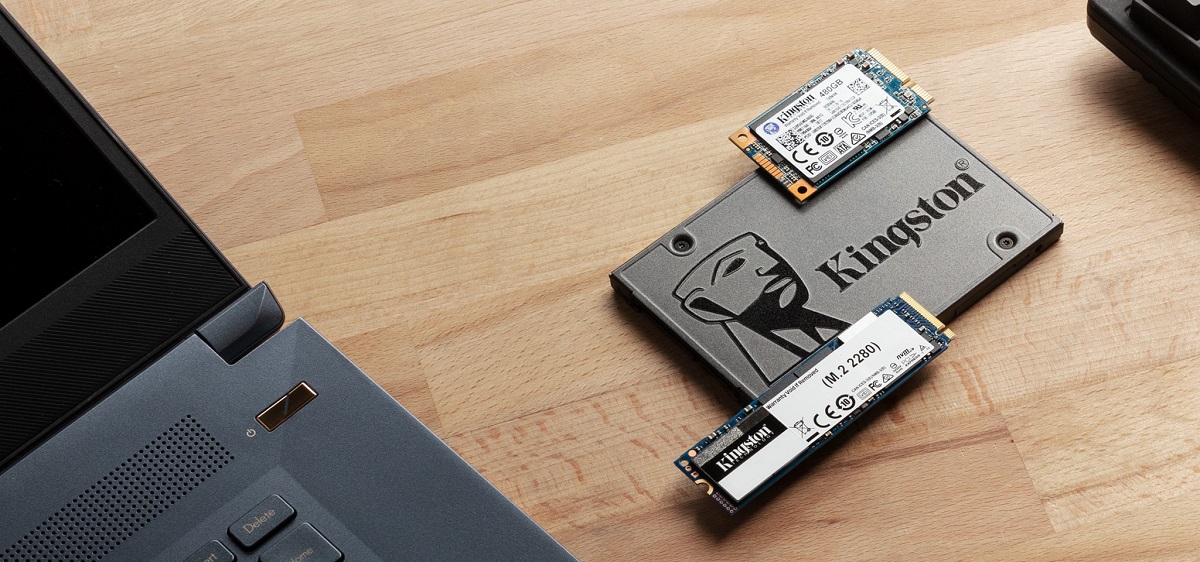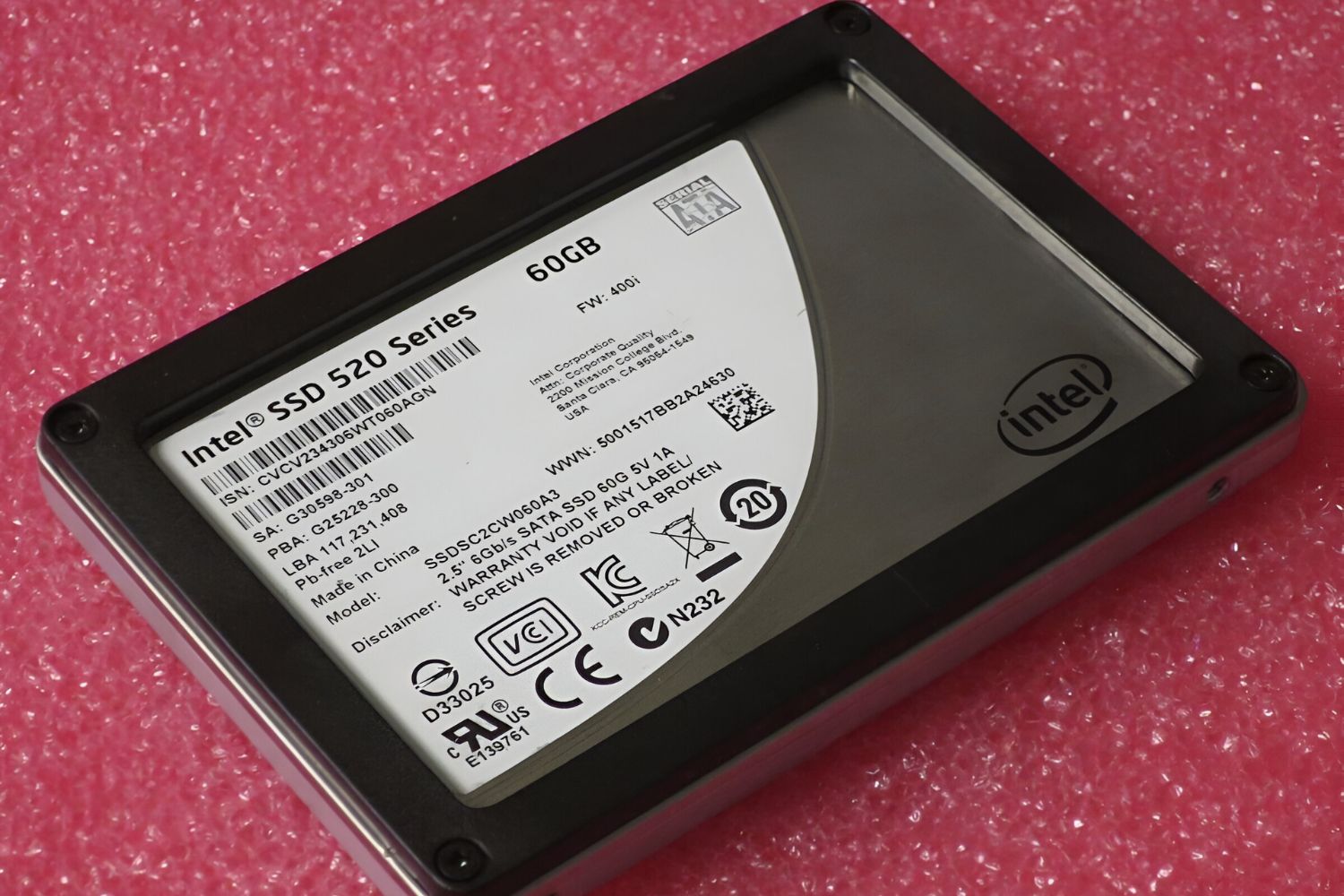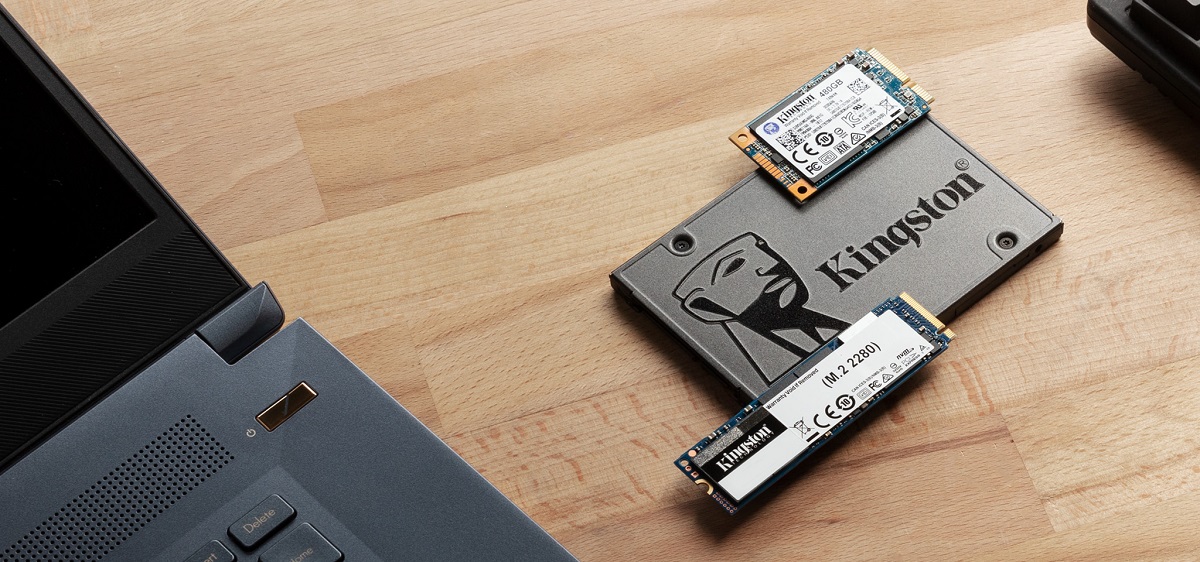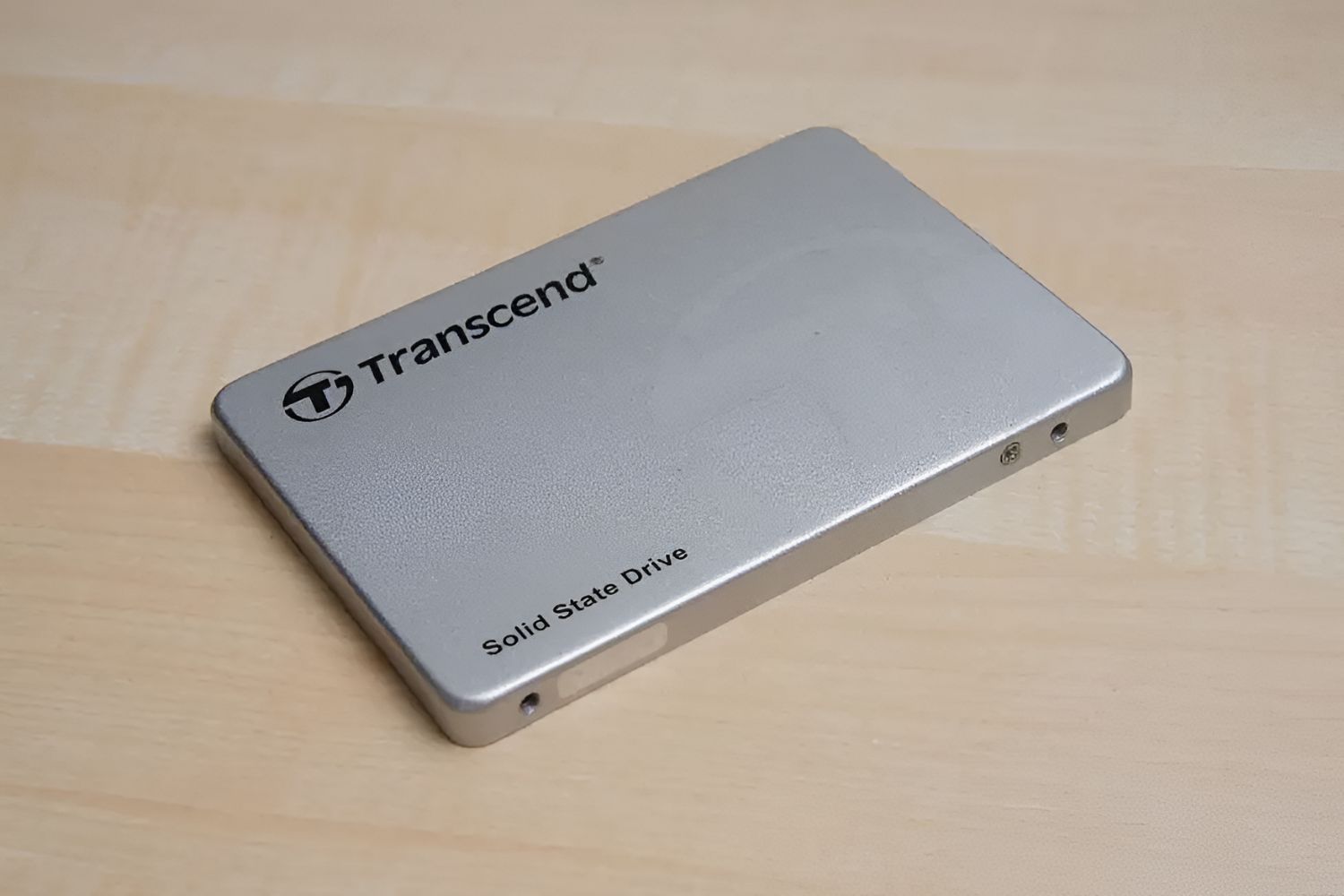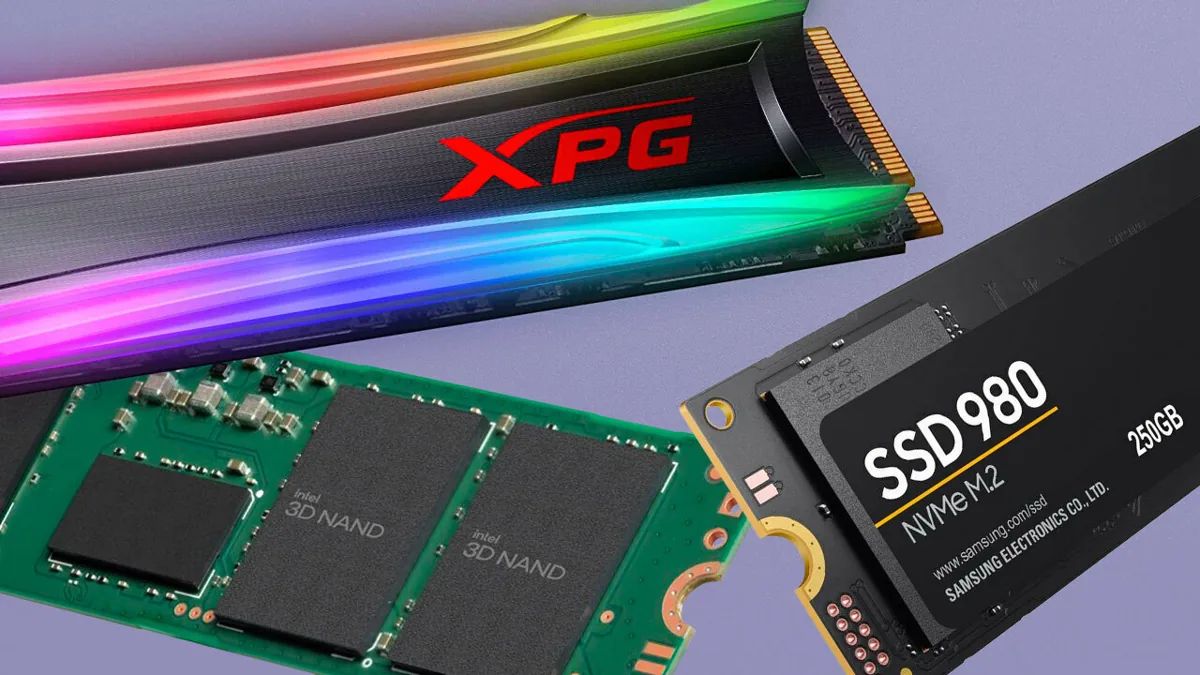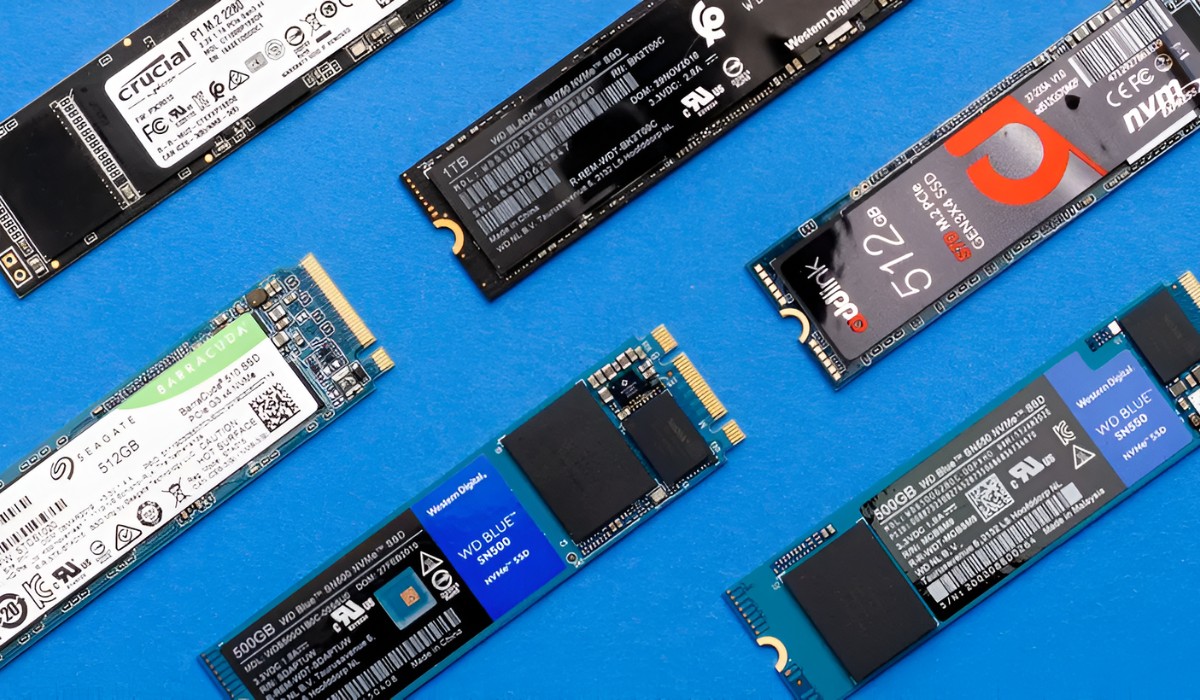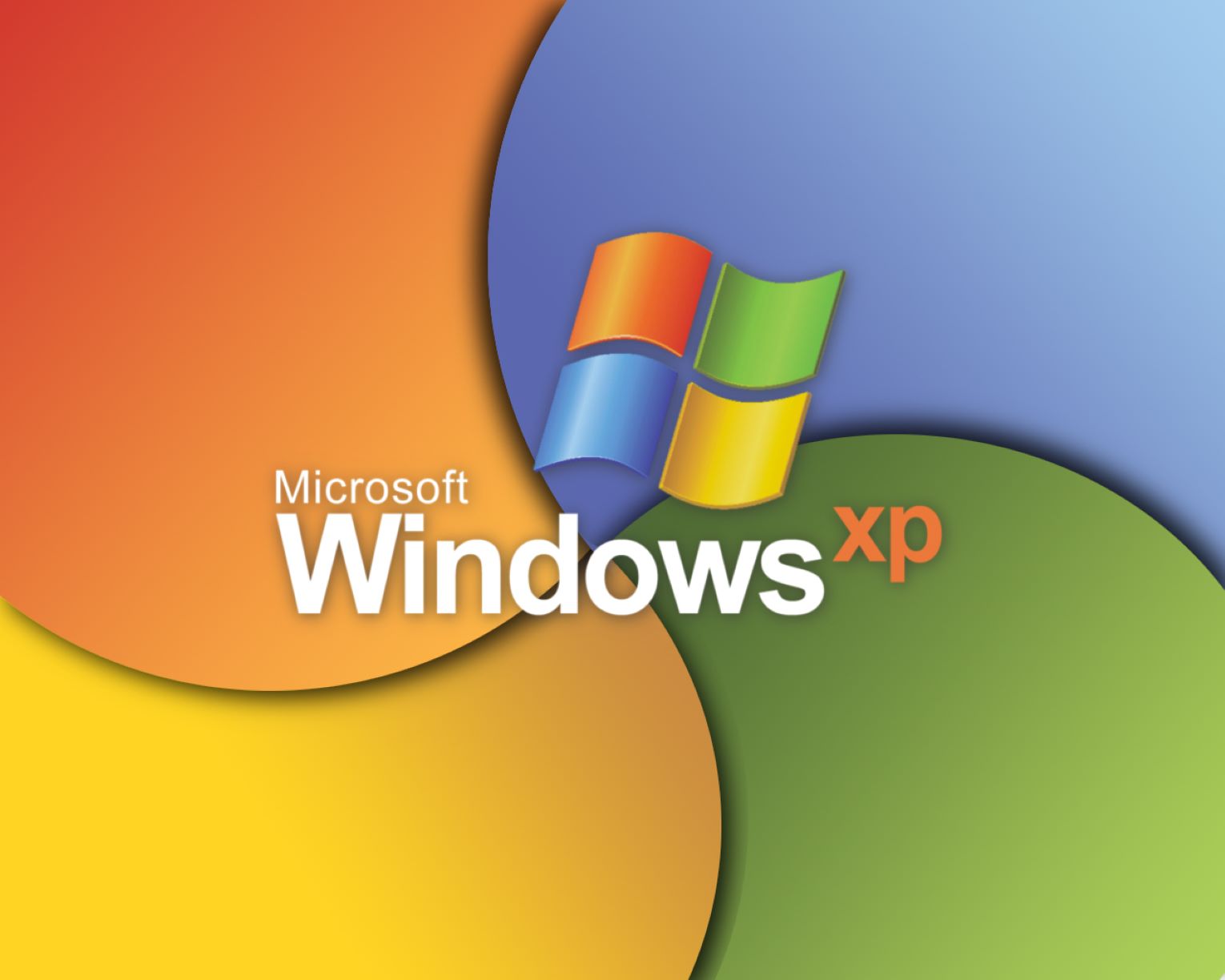Introduction
Welcome to the world of solid state drives (SSDs) and the promise of faster computing. If you’re still using Windows XP, you may be wondering if upgrading to an SSD can breathe new life into your aging system. In this article, we’ll explore the benefits of SSDs and how they can potentially improve the overall performance of a Windows XP machine.
Windows XP, released by Microsoft back in 2001, was once the dominant operating system for millions of users around the world. However, as technology advances, Windows XP has become increasingly outdated and lacks the performance capabilities offered by modern operating systems. But fear not! An SSD can help remedy some of the performance limitations of Windows XP, providing a noticeable boost in speed and responsiveness.
So, what exactly is a solid state drive? Unlike traditional hard disk drives (HDDs) that rely on spinning disks and magnetic methods to store data, SSDs use flash memory. This means there are no moving parts, resulting in faster access times and improved reliability. With no mechanical components to slow it down, an SSD can read and write data at lightning-fast speeds.
Now you might be wondering, how does an SSD improve performance? Well, it all comes down to the speed at which data can be accessed. A traditional HDD can take several milliseconds to access data, while an SSD can do it in microseconds. This means that your Windows XP system will be able to load programs and files much quicker, resulting in a smoother and more efficient computing experience.
In the following sections, we’ll delve deeper into the specifics of installing an SSD in a Windows XP system and compare the performance differences between using an HDD and an SSD. We’ll look at factors such as boot time, application load times, and file transfer speeds to give you a comprehensive understanding of how much faster Windows XP can run on an SSD.
What is a Solid State Drive (SSD)?
A solid state drive (SSD) is a storage device that uses flash memory to store data. Unlike traditional hard disk drives (HDDs) that rely on spinning disks and magnetic methods, SSDs have no moving parts. Instead, they use integrated circuits to store and retrieve data electronically.
One of the key advantages of SSDs is their speed. With no mechanical components, SSDs can access data much faster than HDDs. This means that tasks like booting up your computer, launching applications, and transferring files can be completed in mere seconds, providing a significant improvement in overall system responsiveness.
SSDs also offer improved reliability and durability compared to HDDs. Since there are no spinning disks that can be easily damaged, SSDs are less prone to mechanical failures. They are also more resistant to shock and vibration, making them a suitable choice for portable devices like laptops.
Another benefit of SSDs is their energy efficiency. Traditional HDDs require additional power to spin their disks, whereas SSDs consume less power since they don’t have any moving parts. This not only leads to longer battery life for laptops but also reduces the carbon footprint by consuming less energy overall.
SSDs come in different form factors, including 2.5-inch drives that resemble laptop HDDs, M.2 drives that are smaller and more compact, and PCIe-based drives that offer even faster speeds through a direct connection to the motherboard. It’s important to choose the right SSD form factor that is compatible with your system’s interface.
While SSDs offer numerous benefits, it’s worth noting that they typically have a higher cost per storage capacity compared to HDDs. However, prices have been steadily decreasing, making SSDs more affordable and accessible for consumers.
In summary, SSDs are a type of storage device that use flash memory to store data. They offer faster speeds, improved reliability, lower power consumption, and come in different form factors. Upgrading to an SSD can greatly enhance the performance and efficiency of your Windows XP system.
How Does an SSD Improve Performance?
To understand how an SSD improves performance, it’s important to compare it to a traditional hard disk drive (HDD) and explore the key differences between the two.
An SSD uses flash memory technology, which enables it to access data much faster than an HDD. Unlike HDDs, which rely on spinning disks and mechanical read/write heads, an SSD has no moving parts. This means that the data can be accessed almost instantly, resulting in significantly reduced load times for applications and files.
Additionally, the random access speed of an SSD is much higher than that of an HDD. While an HDD needs to physically move its read/write heads to various locations on the disk to retrieve data, an SSD can access any location on the drive equally quickly. This allows for faster multitasking and improved responsiveness when working with multiple applications simultaneously.
Another factor that contributes to the improved performance of an SSD is its ability to handle small file transfers more efficiently. HDDs often struggle with small file transfers due to the time required for the read/write heads to move to different locations on the disk. SSDs, on the other hand, excel at handling small file transfers, resulting in faster overall system performance.
Furthermore, the lack of moving parts in an SSD eliminates the mechanical limitations and potential failures that plague HDDs. The absence of spinning disks means that there are no mechanical failures due to wear and tear, such as disk fragments or crashes. This, in turn, leads to enhanced reliability and stability of your system.
SSDs also benefit from being able to access data simultaneously from multiple locations on the drive. This parallelization of data access allows for faster overall performance, especially when dealing with large files or complex applications that require accessing multiple files concurrently.
In summary, an SSD drastically improves performance compared to an HDD by leveraging its faster data transfer rates, lower latency, random access speed, and ability to handle small file transfers efficiently. These factors combined make an SSD an excellent choice for upgrading your Windows XP system and enjoying a smoother and more responsive computing experience.
Understanding the Limitations of Windows XP
While Windows XP was once a popular and widely used operating system, it does have its limitations when it comes to modern computing requirements. It’s important to be aware of these limitations before considering an upgrade to a solid state drive (SSD).
One major limitation of Windows XP is its lack of support for modern hardware and software. As technology advances, manufacturers and developers prioritize compatibility with newer operating systems. This means that some newer hardware components and software applications may not work optimally, or at all, on Windows XP.
Another limitation of Windows XP lies in its security vulnerabilities. Microsoft ended support for Windows XP in 2014, which means there are no more official updates or security patches being released. This leaves Windows XP systems more susceptible to malware, viruses, and other security threats. It’s crucial to take extra precautions, such as using reliable antivirus software and practicing safe browsing habits, to mitigate these risks.
In terms of performance, Windows XP may not be able to fully take advantage of the capabilities of an SSD. The operating system was not designed with SSDs in mind, and therefore lacks some of the optimizations and features found in newer operating systems that are specifically tailored for SSD usage.
Furthermore, Windows XP has limited support for advanced features such as trim, which helps maintain optimal performance and lifespan of an SSD. Without trim support, the SSD’s performance might degrade over time due to inefficient garbage collection and wear leveling.
Lastly, Windows XP has a maximum limit of 4GB of RAM that it can utilize. This might result in limitations in multitasking and handling memory-intensive applications or workloads. Newer operating systems, on the other hand, offer better memory management and can take full advantage of higher RAM capacities.
Despite these limitations, Windows XP can still benefit from an SSD upgrade. The improved speed and responsiveness of an SSD can help alleviate some of the performance bottlenecks associated with the aging operating system. However, it’s essential to weigh these limitations against the potential benefits of an SSD upgrade when considering whether to make the switch.
Installing an SSD in a Windows XP System
Upgrading your Windows XP system with a solid state drive (SSD) can be a relatively straightforward process, but it’s important to follow the necessary steps to ensure a successful installation. Here’s a general guide to help you get started:
- Backup your data: Before making any hardware changes, it’s crucial to back up all your important files and data. This can be done by creating a backup on an external storage device or using cloud-based backup services.
- Select the right SSD: Choose an SSD that is compatible with your Windows XP system. Consider factors such as the form factor, storage capacity, and interface (SATA or IDE). Check the specifications of your computer’s motherboard to ensure compatibility with your chosen SSD.
- Gather necessary tools: You will need a few tools to open your computer and install the SSD. These may include a screwdriver, an antistatic wrist strap (to prevent damage from static electricity), and possibly an adapter or bracket depending on the form factor of your chosen SSD.
- Power off and disconnect your computer: Shut down your computer properly and unplug it from the power source. This will ensure your safety during the installation process.
- Open your computer case: Use the appropriate screwdriver to open the computer case. Refer to your computer’s manual or manufacturer’s website for specific instructions on how to access the internal components.
- Locate the old HDD: Identify the existing hard disk drive (HDD) in your computer. It is typically connected via a SATA or IDE cable to the motherboard and housed in a drive bay.
- Disconnect the old HDD: Carefully disconnect the cables connected to the old HDD. Remove any screws that may be securing it in place. Gently slide or remove the old HDD from the drive bay.
- Install the SSD: Take your new SSD and connect the necessary cables to it. Secure it in the empty drive bay using screws or an adapter if needed.
- Connect the SSD cables: Connect the SATA or IDE cable from the SSD to the motherboard, ensuring a secure connection. Similarly, connect the power cable to the SSD.
- Close the computer case: Once the SSD is properly installed, carefully close the computer case and secure it with screws.
- Power on and configure the SSD: Plug in your computer and power it on. Enter the BIOS setup (usually by pressing a designated key during startup) and ensure that the BIOS detects the SSD. If needed, adjust the boot order to prioritize the SSD as the primary boot device.
- Install Windows XP (if necessary): If you are installing the SSD as a new primary drive, you may need to reinstall Windows XP. Follow the on-screen prompts to complete the installation process.
- Restore your data: Once Windows XP is installed, restore your backed-up files and data to the new SSD. You can do this by copying the files back to their original locations or using a backup restoration tool.
Remember to consult the documentation provided by the SSD manufacturer and your computer’s manual for any specific instructions or details that may apply to your particular system. If you are unsure about any step of the installation process, it’s always recommended to seek assistance from a professional technician.
Comparing Performance: Windows XP on HDD vs SSD
Now that we have installed a solid state drive (SSD) in our Windows XP system, it’s time to compare the performance differences between using an HDD and an SSD. Let’s take a closer look at the key areas where an SSD can make a significant impact:
- Boot Time: One of the noticeable improvements with an SSD is the reduced boot time. While the exact time may vary depending on your specific setup, Windows XP on an SSD can typically boot up in a matter of seconds, compared to the longer boot times of an HDD.
- Application Load Time: The speed at which applications load is greatly improved with an SSD. Whether it’s launching a web browser, opening a document, or running resource-intensive software, you will experience significantly faster load times with an SSD compared to an HDD.
- File Transfer Speed: Transferring files between drives or copying files within the system becomes much faster with an SSD. Large files, in particular, can be transferred in a fraction of the time it would take on an HDD.
- Overall System Responsiveness: The overall performance and responsiveness of a Windows XP system on an SSD are noticeably improved. Tasks such as multitasking, switching between applications, and navigating through the operating system feel smoother and more fluid.
It’s important to note that the extent of performance improvements will depend on various factors, including the specific hardware configuration of your system, the specific SSD model you have installed, and the software you are using.
While Windows XP may not fully utilize the advanced features and optimizations tailored for SSDs, the inherent speed and reduced latency of an SSD can still bring noticeable benefits to the overall user experience. The improved performance can extend the lifespan of your Windows XP system, allowing you to continue using it with greater efficiency and satisfaction.
Remember, however, that an SSD upgrade alone will not address all performance limitations of Windows XP. It’s important to ensure that your system has adequate memory (RAM) and that software and drivers are up to date to maximize the potential benefits of an SSD.
In the next section, we will discuss factors that may impact the performance difference between using an HDD and an SSD on a Windows XP system. Understanding these factors will give us a more comprehensive view of the overall performance improvement of an SSD.
Boot Time Comparison: HDD vs SSD
One of the most noticeable performance improvements when using a solid state drive (SSD) instead of a traditional hard disk drive (HDD) in a Windows XP system is the significantly reduced boot time.
With an HDD, the boot process involves the spinning of mechanical disks and the moving of read/write heads to access the necessary startup files. This process can take a considerable amount of time, especially if the HDD is fragmented or has a high capacity with numerous files.
On the other hand, an SSD has no moving parts and utilizes flash memory technology, allowing for near-instantaneous access to startup files. As a result, the boot time is drastically reduced, resulting in a faster startup process for your Windows XP system.
In general, a Windows XP system installed on an SSD can boot up in a matter of seconds. The exact boot time will vary depending on various factors such as the specific SSD model, the capacity and condition of the drives, and the overall system configuration.
The improved boot time provided by an SSD offers several benefits. First and foremost, it allows you to quickly start using your computer without wasting time waiting for the operating system to load. Whether it’s for work, leisure, or any other purpose, the reduced boot time enhances productivity and responsiveness.
Additionally, the faster boot time provided by an SSD can be particularly beneficial for users who frequently restart their computers, such as gamers or those who regularly install software updates or system patches. Instead of waiting for minutes, the system can be up and running in just a few seconds, saving valuable time and improving efficiency.
It’s worth noting that the boot time comparison between an HDD and an SSD is often one of the most striking improvements seen when upgrading to an SSD. The quick and seamless startup experience sets a positive tone for the overall user experience, demonstrating the tremendous advantage of using an SSD in your Windows XP system.
In the next section, we will explore the impact of an SSD on application load times. Understanding how an SSD improves application load times will further highlight the performance benefits of using an SSD in a Windows XP system.
Application Load Time Comparison: HDD vs SSD
When it comes to application load times, using a solid-state drive (SSD) instead of a traditional hard disk drive (HDD) in a Windows XP system can make a significant difference. The speed and responsiveness of an SSD greatly improve the load times of various applications, contributing to a more efficient computing experience.
With an HDD, the process of launching applications involves the mechanical movement of read/write heads to access the necessary files scattered across the spinning disks. This mechanical process introduces latency and can result in noticeable delays in application load times, especially for larger or more resource-intensive software.
On the other hand, an SSD’s lack of moving parts allows for nearly instantaneous access to the required application files. Applications load significantly faster, reducing the waiting time and enabling users to start using their desired software quickly.
Whether it’s opening a web browser, launching a document editor, or running sophisticated software such as photo and video editing tools or gaming applications, the difference in load times between an HDD and an SSD is remarkable.
For example, imagine a scenario where you need to quickly access an important document or spreadsheet. With an SSD, the application loads almost instantly, allowing you to start working without delay. In contrast, with an HDD, you might experience a noticeable lag in loading the application, leading to frustration and wasted time.
In addition to the time saved, the improved application load times provided by an SSD contribute to a more seamless and efficient workflow. It enhances productivity, allowing users to move fluidly between different applications and tasks without the constant waiting associated with an HDD.
Furthermore, the speed and responsiveness of an SSD in loading applications can greatly benefit professionals who work with resource-intensive software. Applications that require substantial processing power or handle large datasets, such as video editing software or virtual machines, will experience significantly faster load times with an SSD.
It’s important to note that the exact improvement in application load times will depend on several factors, including the specific SSD model, the size and complexity of the application being loaded, the overall system configuration, and the general health and remaining capacity of the SSD.
In the next section, we will explore the advantages of an SSD in terms of file transfer speeds. Understanding how an SSD improves file transfer speeds will provide a comprehensive overview of the performance benefits it brings to a Windows XP system.
File Transfer Speed Comparison: HDD vs SSD
When it comes to file transfers, a solid-state drive (SSD) outshines a traditional hard disk drive (HDD) in a Windows XP system. The speed and performance advantages of an SSD significantly improve file transfer speeds, allowing for faster and more efficient data transfers.
With an HDD, file transfers involve the mechanical movement of read/write heads to access data stored on spinning disks. This mechanical process introduces latency and limits the overall transfer speeds, especially when dealing with large files or a high volume of smaller files.
On the other hand, an SSD’s lack of moving parts and utilization of flash memory technology enable lightning-fast data transfers. The absence of mechanical constraints allows for near-instantaneous access to data, resulting in significantly improved file transfer speeds.
Whether you’re copying files within your Windows XP system, transferring files between drives, or backing up data to external storage, an SSD can make a world of difference. Large files such as high-resolution images, videos, or software installations can be transferred in a fraction of the time it would take with an HDD.
Not only does the faster file transfer speed save time, but it also enhances productivity and efficiency. File-intensive tasks, such as working with large datasets or performing backup operations, become substantially quicker and less cumbersome with an SSD.
Another advantage of SSDs when it comes to file transfer speeds is their ability to handle small file transfers more efficiently. HDDs tend to struggle with small file transfers due to the time required for the read/write heads to move between different locations on the disk. SSDs overcome this limitation by random access to any location on the drive, allowing for faster overall system performance when working with numerous small files.
However, it’s important to note that the speed of file transfers may still be influenced by other factors such as the overall system configuration, the specific SSD model used, the available interface (SATA or IDE), and the health and remaining capacity of the SSD.
Overall, the improved file transfer speeds provided by an SSD in a Windows XP system offer a significant advantage over an HDD. Whether you’re dealing with large files, frequent data transfers, or numerous smaller files, the speed and efficiency of an SSD will greatly enhance your file management capabilities and improve your overall computing experience.
Next, we will examine the overall performance improvement that an SSD brings to a Windows XP system. Understanding the various factors and considerations impacting this improvement will provide a comprehensive perspective on the benefits an SSD offers.
Overall Performance Improvement
Upgrading a Windows XP system with a solid-state drive (SSD) brings about a significant improvement in overall performance. The combination of faster boot times, quicker application load times, and enhanced file transfer speeds contributes to a smoother and more efficient computing experience.
SSDs provide a substantial boost in speed and responsiveness compared to traditional hard disk drives (HDDs). The near-instantaneous access to data and superior random read and write capabilities offer a noticeable improvement in overall system performance.
First and foremost, the reduced boot time offered by an SSD allows for a faster start-up process. Windows XP installed on an SSD can boot up in a matter of seconds, getting you up and running quickly without wasting time waiting for the operating system to load.
Furthermore, application load times are significantly improved with an SSD. Whether it’s launching web browsers, productivity software, or resource-intensive applications, you will experience faster load times, allowing you to start working or using your desired software almost instantly.
The improved file transfer speeds of an SSD greatly enhance data transfer and file management tasks. Large files can be transferred or copied in a fraction of the time it would take with an HDD, leading to increased productivity and efficiency when working with files of any size.
In addition to these specific performance improvements, using an SSD in a Windows XP system offers numerous other benefits. SSDs have no moving parts, resulting in improved durability and reliability compared to HDDs. They are also more energy-efficient, consuming less power and extending the battery life of laptops.
It’s important to note that while an SSD greatly enhances the performance of a Windows XP system, there are other factors that can impact overall system performance as well. These include the amount of available RAM, the efficiency of the CPU, and the software and drivers utilized.
However, the upgrade to an SSD alone can breathe new life into an aging Windows XP system, making it feel more responsive, efficient, and capable of handling modern computing tasks.
In summary, the overall performance improvement brought about by installing an SSD in a Windows XP system is undeniable. With faster boot times, quicker application load times, and enhanced file transfer speeds, an SSD significantly enhances the computing experience and allows you to make the most of your Windows XP system.
Factors That May Impact Performance Difference on Windows XP
While upgrading a Windows XP system with a solid-state drive (SSD) can result in significant performance improvements, it’s essential to consider several factors that may impact the overall difference in performance between using an SSD and a traditional hard disk drive (HDD).
Here are some key factors to consider:
- System Configuration: The overall configuration of your Windows XP system can have an impact on the performance difference. Factors such as the CPU speed, available RAM, and the efficiency of other components, including the motherboard, can influence how well the system takes advantage of the benefits offered by an SSD.
- Software and Drivers: The performance difference between an SSD and an HDD can be influenced by the software and drivers utilized in the system. Outdated or incompatible software and drivers can limit the performance potential of an SSD. Ensuring that you have the latest software versions and compatible drivers can help maximize the benefits of using an SSD.
- Operating System Optimization: Windows XP was not specifically designed to take full advantage of SSD technology. While an SSD can still provide performance benefits, newer operating systems often have built-in optimizations tailored for SSDs. Upgrading to a newer operating system, such as Windows 10, may unlock even greater performance improvements with an SSD.
- Health and Remaining Capacity of the SSD: The health and remaining capacity of your SSD can affect its performance over time. SSDs rely on wear-leveling algorithms to distribute data evenly and prolong the lifespan of the drive. However, as an SSD fills up with data, its performance may start to degrade. Regularly monitoring the health of the SSD and ensuring there is sufficient free space can help maintain optimal performance.
- Trim Support: Trim is a feature that helps maintain the performance of an SSD by managing the storage of data on the drive. While some SSDs support automatic Trim in Windows XP, others may require additional software or manual Trim commands to maintain performance over time. Enabling and utilizing Trim can help ensure the continued performance benefits of the SSD.
It’s important to note that while these factors can potentially impact the performance difference between using an SSD and an HDD on a Windows XP system, the overall advantages of an SSD in terms of speed, responsiveness, and reliability are still significant.
Considering these factors, it’s recommended to evaluate your specific system configuration, software compatibility, and the health of your SSD to maximize the performance improvements and ensure a smooth and efficient computing experience with a Windows XP system upgraded with an SSD.
Conclusion
Upgrading a Windows XP system with a solid-state drive (SSD) can breathe new life into an aging computer and significantly improve its performance. By leveraging the benefits of an SSD, such as faster boot times, quicker application load times, and enhanced file transfer speeds, users can enjoy a smoother, more efficient computing experience.
An SSD’s ability to access data quickly and without the mechanical limitations of a traditional hard disk drive (HDD) translates into a noticeable boost in speed and responsiveness. Tasks that once took several seconds or longer, such as booting up the system or loading applications, can now be completed in a matter of seconds.
Furthermore, the improved file transfer speeds provided by an SSD enhance productivity and efficiency when working with large files or performing data-intensive tasks. The time saved on file transfers allows users to focus more on their work and spend less time waiting for data to load or transfer.
While Windows XP does have its limitations in terms of hardware and software support, an SSD can still make a significant difference in performance. However, it’s important to consider factors such as system configuration, software optimization, and the health of the SSD to maximize the performance improvements.
Overall, upgrading to an SSD allows Windows XP users to enjoy a more responsive and efficient computing experience. While an SSD may not fully unlock the performance advantages seen on newer operating systems, the benefits it brings to a Windows XP system are undeniable.
Whether you’re looking to extend the lifespan of your Windows XP system or simply want to enhance its performance, investing in an SSD can be a worthwhile and cost-effective solution. The increased speed, reliability, and efficiency provided by an SSD will make your Windows XP system feel like new again.
So, if you’re still using Windows XP and are craving a faster, more responsive computing experience, consider upgrading to an SSD and unlock the full potential of your system.







